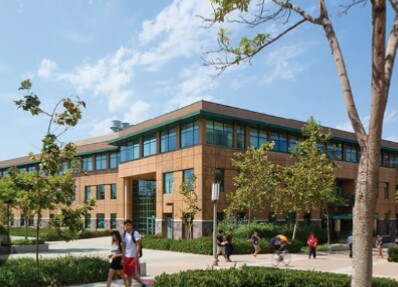Introduction University of California, Irvine
The University of California, Irvine (UCI), located in the heart of California, has emerged as a leader in sustainability and environmental stewardship.
With a strong commitment to addressing climate change and promoting sustainable practices, UCI has transformed its campus into a thriving model of sustainability.
Through innovative initiatives, collaborative partnerships, and a culture of environmental consciousness, UCI exemplifies its dedication to creating a sustainable future.
In this article, we will explore the sustainable practices and initiatives undertaken by the University of California, Irvine, highlighting its role as a catalyst for change in higher education.
UC Irvine Sustainability
1. Carbon Neutrality and Climate Action:
UCI has set ambitious goals to achieve carbon neutrality and address climate change. The university has implemented comprehensive strategies to reduce greenhouse gas emissions, including investing in renewable energy sources and energy-efficient technologies.
UCI actively engages in research and innovation to develop sustainable solutions for climate mitigation and adaptation. By leading the way in carbon neutrality, UCI demonstrates its commitment to a sustainable and resilient future.
2. Sustainable Campus Design and Infrastructure:
UCI prioritizes sustainable campus design and infrastructure. The university incorporates green building practices, energy-efficient technologies, and water conservation measures into its facilities.
UCI’s sustainable campus features permeable pavements, rainwater harvesting systems, and drought-resistant landscaping. Through sustainable design, UCI creates an environment that minimizes resource consumption and enhances the well-being of its community.
3. Waste Reduction and Recycling:
UCI places a strong emphasis on waste reduction and recycling. The university has implemented robust waste management systems, including recycling programs, composting initiatives, and electronic waste collection.
UCI promotes responsible consumption and educates its community about waste separation and recycling practices. By diverting waste from landfills and embracing a circular economy, UCI minimizes its environmental footprint.
4. Sustainable Transportation and Active Mobility:
UCI encourages sustainable transportation options and promotes active mobility on campus. The university provides extensive cycling infrastructure, electric vehicle charging stations, and a free shuttle service.
UCI actively promotes carpooling and public transportation use to reduce carbon emissions. By prioritizing sustainable transportation alternatives, UCI fosters a culture of eco-friendly commuting and reduces traffic congestion.
5. Water Conservation and Efficiency:
Given California’s water scarcity challenges, UCI places significant importance on water conservation and efficiency. The university has implemented water-saving technologies, such as low-flow fixtures and smart irrigation systems.
UCI also promotes water education and behavior change among its community to reduce water consumption. By managing water resources responsibly, UCI demonstrates its commitment to sustainability in a water-stressed region.
6. Research and Innovation for Sustainability:
UCI is a hub of sustainability research and innovation. The university’s faculty and students engage in interdisciplinary research projects focused on renewable energy, sustainable agriculture, climate science, and environmental conservation.
UCI fosters collaboration between academia, industry, and government to develop innovative solutions for sustainability challenges. By pushing the boundaries of knowledge and driving sustainable innovation, UCI contributes to positive global change.
University of California, Irvine: Sustainable Campus Design
The goal is to create a campus that minimizes its environmental impact, promotes renewable energy use, reduces waste, and fosters a sustainable and eco-friendly learning environment for students and the community.
The University of California, Irvine’s Sustainable Campus Design refers to their environmentally conscious approach to planning and developing the university campus.
This involves integrating principles of sustainability, energy efficiency, and ecological responsibility into various aspects of campus design, construction, and operation.
The Sustainable Campus Design at the University of California, Irvine involves the thoughtful arrangement of buildings, outdoor spaces, and infrastructure to minimize environmental impact and promote sustainability.
This approach draws from architecture, urban planning, and environmental science to create an eco-friendly environment.
Key components include energy-efficient buildings, integration of renewable energy sources, creation of green spaces, use of sustainable materials, water conservation measures, pedestrian-friendly pathways, accessibility features, innovative technologies, waste management systems, community spaces, and more.
The design aims to align with the university’s commitment to sustainability, foster a sense of community, and inspire environmentally responsible practices.
Conclusion University of California, Irvine
The University of California, Irvine stands as a beacon of sustainability in higher education.
Through its commitment to carbon neutrality, sustainable campus design, waste reduction, sustainable transportation, water conservation, and research for sustainability, UCI sets a powerful example for other academic institutions.
By integrating sustainability into its operations, education, and culture, UCI inspires individuals to embrace sustainable practices and become agents of positive change. With its unwavering dedication to sustainability, UCI paves the way for a more sustainable future, both on campus and beyond.
https://www.exaputra.com/2023/08/university-of-california-irvine-forging.html
Renewable Energy
“Trump Is Cruel”
 It’s comments like the one on the left that should serve as a reminder that Trump’s only power lies in the feeblemindedness of that “base” to which his late sister refers.
It’s comments like the one on the left that should serve as a reminder that Trump’s only power lies in the feeblemindedness of that “base” to which his late sister refers.
I only wish I had a good idea as to how to wake these people up.
Btw, I don’t disapprove of the way the Ms. Trump Barry used course language to make her point. That said, my mother was from this era, and in all the years we spent together, had she ever used the phrase “holy shit” in my presence, I probably would have passed out on the floor in utter shock.
Renewable Energy
We Are Citizens of Earth
 Writing my recent post called “Educating for Peace” reminded of one of my first clients, a gentleman by the name of Dan McGee, who casually mentioned on day that he considered himself a “citizen of Earth,” as opposed to the United States.
Writing my recent post called “Educating for Peace” reminded of one of my first clients, a gentleman by the name of Dan McGee, who casually mentioned on day that he considered himself a “citizen of Earth,” as opposed to the United States.
We live in a country in which a huge number of residents will tell you with great authority (and not too much thought) that “America is the greatest country on Earth.” If I were to make such a statement, I’d first consider what this actually means, in terms of health, longevity, happiness, education, equality of justice, environmental responsibility, wealth distribution, capacity for kindness, and compassion for people who may not look or worship like we do.
I know that such thinking doesn’t hold much water among the Fox News devotees and MAGA folks, but somehow that’s OK with me.
Renewable Energy
Trump from New Zealand’s Perspective
There’s no question that something has gone incredibly wrong with the United States, and, as shown at left, you don’t have to be an American to see that.
The question is what to do about it. Trump is not a state representative from South Dakota, nor is he the mayor of Houston. He’s the U.S. President, and the majority of Congress do anything he asks as required not to earn his vengeance.
-
Climate Change2 years ago
Spanish-language misinformation on renewable energy spreads online, report shows
-
Climate Change3 months ago
Guest post: Why China is still building new coal – and when it might stop
-
Climate Change Videos2 years ago
The toxic gas flares fuelling Nigeria’s climate change – BBC News
-

 Greenhouse Gases1 year ago
Greenhouse Gases1 year ago嘉宾来稿:满足中国增长的用电需求 光伏加储能“比新建煤电更实惠”
-
Greenhouse Gases3 months ago
Guest post: Why China is still building new coal – and when it might stop
-

 Climate Change1 year ago
Climate Change1 year ago嘉宾来稿:满足中国增长的用电需求 光伏加储能“比新建煤电更实惠”
-

 Carbon Footprint2 years ago
Carbon Footprint2 years agoUS SEC’s Climate Disclosure Rules Spur Renewed Interest in Carbon Credits
-
Renewable Energy4 months ago
US Grid Strain, Possible Allete Sale






